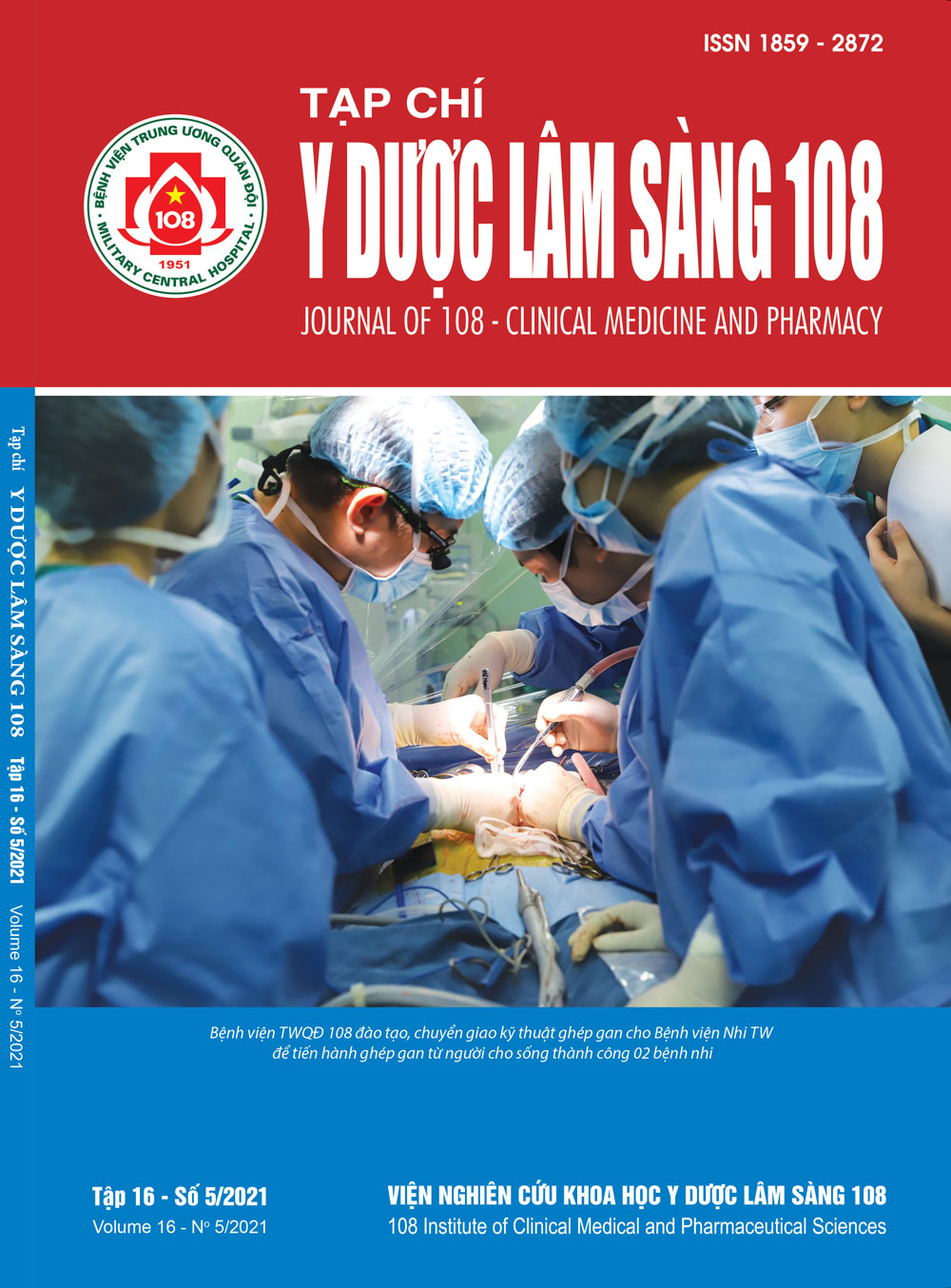Computed tomography brain imaging features of acute ischemic stroke patients with intracerebral arterial occlusion within 6 first hours
Main Article Content
Keywords
Abstract
Objective: To describe the computed tomography imaging features of acute ischemic stroke patients with intracerebral arterial occlusion within 6 hours from onset. Subject and method: 123 acute ischemic stroke patients with intracerebral arterial occlusion onset within 6 first hours were enrolled from 11/2016 to 2/2018 at Emergency Department, 108 Military Central Hospital. Noncontrast computed tomography (NCCT) and computed tomography angiography (CTA) were used to investigate the early infarct signs and calculate the Alberta stroke program early CT score (ASPECTS). Result: Mean time from symptoms onset was 205.4 ± 92.4 minutes, the average age of patients was 65.0 ± 11.5 and the proportion of male accounted for 56.9%. The prevalence of early CT signs of brain infarction was 71.5%. Neuroimaging of these patients without focal parenchymal hypoattenuation made up 26.8%. On CTA, large artery occlusions represented 63.4% and 79.7% of these belonged to anterior circulation. Mean ASPECTS of patients with middle cerebral artery (MCA) occlution was 7.75 ± 1.82 point. Conclusion: Patients with ischemic stroke within 6 first hours often have at least one of the early infarct signs. The large artery occlusions made up 63.4%. Mean ASPECTS of patients with MCA occlution was 7.75 ± 1.82 point.
Article Details
References
2. Barber PA, Demchuk AM, Zhang J, Buchan AM (2000) Validity and reliability of a quantitative computed tomography score in predicting outcome of hyperacute stroke before thrombolytic therapy. ASPECTS Study Group. Alberta Stroke Programme Early CT Score, Lancet (London, England) 355(9216): 1670-1674.
3. Kniep HC, Sporns PB, Broocks G, Kemmling A, Nawabi J, Rusche T, Fiehler J, Hanning U (2020) Posterior circulation stroke: Machine learning-based detection of early ischemic changes in acute non-contrast CT scans. Journal of neurology 267(9): 2632-2641.
4. Smith WS, Lev MH, English JD, Camargo EC, Chou M, Johnston SC, Gonzalez G, Schaefer PW, Dillon WP, Koroshetz WJ, Furie KL (2009) Significance of large vessel intracranial occlusion causing acute ischemic stroke and TIA. Stroke 40(12): 3834-3840.
5. Nguyễn Văn Phương (2019) Nghiên cứu đặc điểm lâm sàng hình ảnh cắt lớp vi tính và hiệu quả điều trị đột quỵ thiếu máu não cấp được tái thông mạch bằng dụng cụ cơ học. Luận án Tiến sĩ Y học, Viện Nghiên cứu Khoa học Y Dược học lâm sàng 108.
6. Mai Duy Tôn (2013) Đánh giá kết quả điều trị đột quỵ nhồi máu não cấp trong 3 giờ đầu bằng thuốc tiêu sợi huyết đường tĩnh mạch liều thấp. Luận án Tiến sỹ y học, Đại học Y Hà Nội tr. 10-19.
7. Matsuo R, Yamaguchi Y, Matsushita T, Hata J, Kiyuna F, Fukuda K, Wakisaka Y, Kuroda J, Ago T, Kitazono T, Kamouchi M (2017) Association between onset-to-door time and clinical outcomes after ischemic stroke. Stroke 48(11): 3049-3056.
8. Saver JL, Smith EE, Fonarow GC, Reeves MJ, Zhao X, Olson DM, Schwamm LH (2010) The "golden hour" and acute brain ischemia: Presenting features and lytic therapy in > 30,000 patients arriving within 60 minutes of stroke onset. Stroke 41(7): 1431-1419.
9. Schroder J, Thomalla G (2016) A critical review of alberta stroke program early CT score for evaluation of acute stroke imaging. Frontiers in neurology 7: 245.
 ISSN: 1859 - 2872
ISSN: 1859 - 2872
